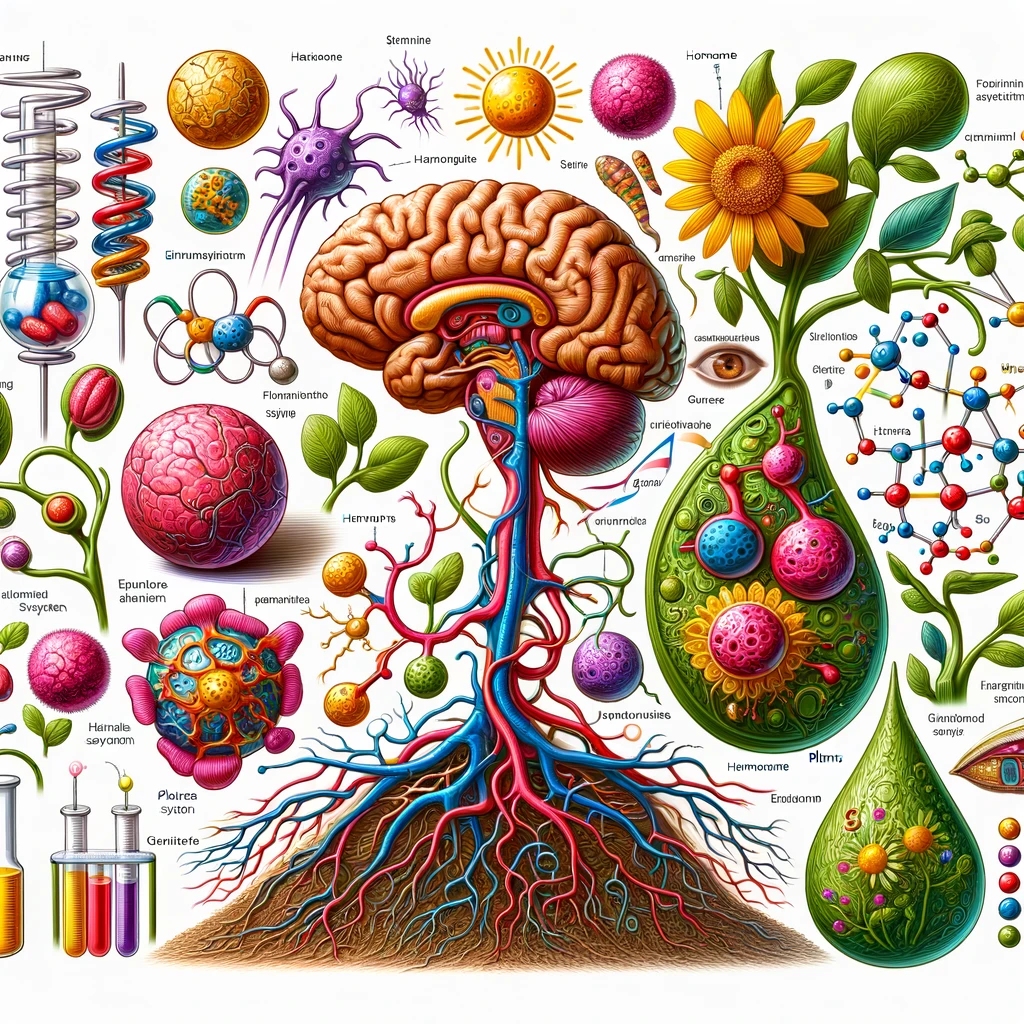
Mastering Control and Coordination: How Living Organisms Manage Their Functions – A Class 10 Science Guide

Navigating Control and Coordination in Living Organisms
Introduction
Control and coordination are vital processes that enable living organisms to respond appropriately to various stimuli, ensuring survival, growth, and adaptation. This chapter explores the sophisticated systems that animals and plants employ to maintain equilibrium and respond to their environment.
Section 1: The Nervous System in Animals
The nervous system is a complex network of nerves and cells (neurons) that transmit signals between different parts of the body. It is the primary system for control and coordination in animals, including humans.
Structure and Function
- Central Nervous System (CNS): Comprises the brain and spinal cord, processing information and coordinating activities.
- Peripheral Nervous System (PNS): Consists of nerves that connect the CNS to the rest of the body, facilitating communication.
Neuron Function
- Detailed explanation of how neurons transmit signals through electrical impulses and chemical neurotransmitters.
Section 2: The Endocrine System in Animals
The endocrine system complements the nervous system in controlling and coordinating bodily functions, primarily through hormones, which are chemicals secreted by glands.
Hormones and Their Functions
- Overview of key hormones like insulin, adrenaline, and thyroid hormones, including their roles in regulating metabolism, stress responses, and growth.
Section 3: Control and Coordination in Plants
Plants also exhibit control and coordination, albeit through different mechanisms than animals, primarily involving growth hormones.
Tropisms
- Explanation of how plants respond to environmental stimuli (light, gravity, water) through directional growth movements called tropisms.
Plant Hormones
- Description of plant hormones (auxins, gibberellins, cytokinins) and their roles in growth, flowering, and responding to stimuli.
Section 4: Feedback Mechanisms
Both animals and plants rely on feedback mechanisms to maintain homeostasis and adapt to changes in their internal and external environment.
Negative and Positive Feedback
- Examples of feedback loops in biological systems, illustrating how they regulate processes like temperature regulation and hormone levels.
Conclusion
Understanding control and coordination in living organisms offers insights into the complexity of life. These processes underscore the intricate balance and adaptability inherent to both animal and plant life.
Call to Action
Explore the wonders of the nervous and endocrine systems through further study and observation. Engage in activities that demonstrate plant responses to environmental stimuli, deepening your appreciation for the marvels of biology.